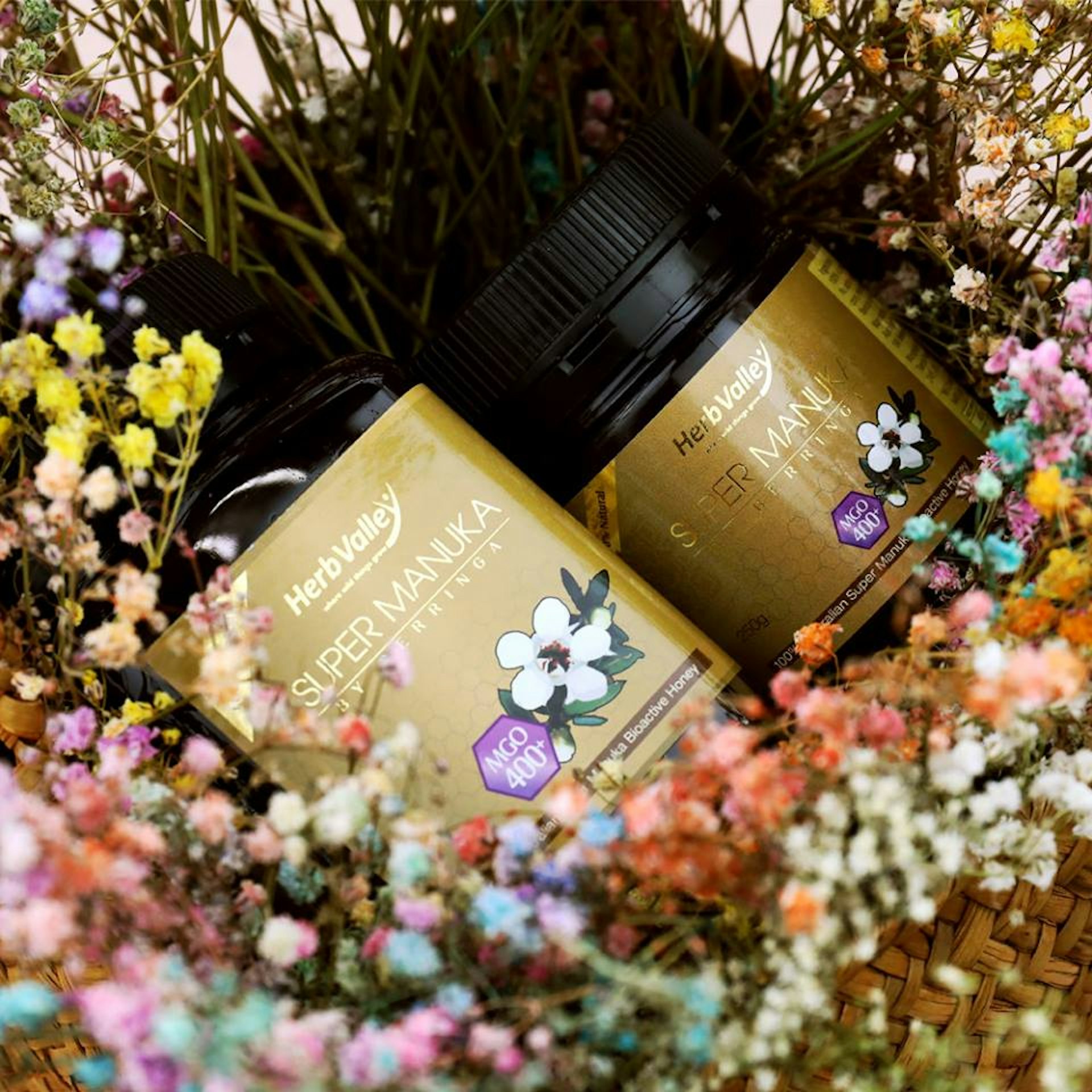
Super Manuka Series
Health and Wellness
Manuka Honey has many benefits. Not to mention being delicious too!
For many centuries the therapeutic properties of honey are well acknowledged and is used by many cultures around the world.
Here are some of the many benefits: [1] Treats wounds, burns and cuts Eradicates antibiotic-resistant bacteria Soothes sore throats and coughs Resolves scalp problems and dandruff.
Honey Properties
Honey’s antimicrobial properties allows it to treat all sorts of conditions. Its antiseptic properties are known for inhibiting the growth of certain bacteria and this helps keep wounds clean and free from infection. Not only that, the antibacterial effect functions as an anti-inflammatory agent which helps with reducing swelling, pain and even scarring! [1,2, 3, 4]
Honey is a hygroscopic, meaning it absorbs moisture out of the environment. It is able to dehydrate bacteria, thus working differently from antibiotics which attacks the bacteria’s cell wall or blocks it from drawing nutrients. [5] Honey’s water absorbing effects come from its glucose and fructose content, two sugars which strongly attracts water. This effect has the following benefits:
Helps stop bacteria from thriving as it deprives them of the moist environments that are favourable to bacteriaM: [6]Draws water to skin cells if applied topically due to its osmotic effect and it aids moisture-retention and hydration, acting as a long lasting moisturiser: [7]Produces minute traces of hydrogen peroxide, a mild antiseptic, when the raw honey’s enzyme, glucose oxidase, combines with water: [8]
Small traces of hydrogen peroxide promotes healing as it can inhibit the growth and development of microorganisms in the living tissue. If there is larger amounts of hydrogen peroxide, it would actually slow down the healing rate as it doesn’t distinguish between healthy and non-healthy cells.[9]
Another reason why honey is resistant to bacteria is due to its low pH level of around 3 - 4.5. Its acidic nature prevents most bacteria from flourishing. [10]It may be due to all these factors that honey has been found to work in places where bacteria has become resistant to antibiotics. This is why for thousands of years, honey has been used for wound dressings and other medicinal purposes due to their effectiveness in preventing infection and speeding up recovery. [4,11]
Herb Valley Australian Manuka
Manuka Honey differentiates itself from other honey by its production and potency.
Herb Valley Manuka antibacterial honey comes from the Leptospermum Polygalifolium bush, another species of the Manuka tree or tea tree. Leptospermum Polygalifolium is commonly known as tantoon and is native to eastern Australia. The Manuka honey is harvested from pristine coastal bushland and has been found to have one of the highest antibacterial rating out of any honey in the world. There has been reported MGO ratings of over 1750mg/kg in certain batches of honey! [12] The higher the MGO (Methylglyoxal rating) content the more potent the antibacterial activity is contained in the honey.[6]
To find out more about MGO ratings and its antimicrobial properties, read “The Oz Honey Project”here.